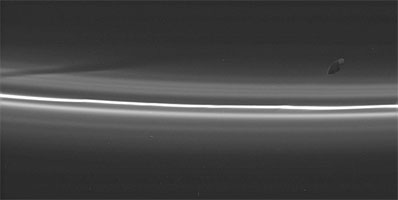
Spaceflight Now +

|

|

|

|

Premium video content for our Spaceflight Now Plus subscribers.

Fuel tank leaves KSC
 Space shuttle external fuel tank No. 120 is moved out of Kennedy Space Center's Vehicle Assembly Building and loaded onto a barge for transport to the Michoud Assembly Facility in New Orleans. Once there, the tank will undergo modifications prior to being returned to Florida for a future launch. Space shuttle external fuel tank No. 120 is moved out of Kennedy Space Center's Vehicle Assembly Building and loaded onto a barge for transport to the Michoud Assembly Facility in New Orleans. Once there, the tank will undergo modifications prior to being returned to Florida for a future launch.

 Play video Play video

Practicing for Stardust
 Stardust spacecraft recovery and science team members meet at NASA's Johnson Space Center in Houston to rehearsed the steps that will be involved when recovering the comet-encountering spacecraft after its landing on Jan. 15, 2006. The spacecraft has collected cometary and interstellar particles for return to Earth. Stardust spacecraft recovery and science team members meet at NASA's Johnson Space Center in Houston to rehearsed the steps that will be involved when recovering the comet-encountering spacecraft after its landing on Jan. 15, 2006. The spacecraft has collected cometary and interstellar particles for return to Earth.

 Play video Play video

Space shuttle update
 Space shuttle program officials Friday held a news conference at the Johnson Space Center to provide a status report on efforts to understand and fix the external tank foam insulation problems and confirm that the next launch won't happen before May 2006. Space shuttle program officials Friday held a news conference at the Johnson Space Center to provide a status report on efforts to understand and fix the external tank foam insulation problems and confirm that the next launch won't happen before May 2006.

 Dial-up | Broadband Dial-up | Broadband

Saturn's spongy moon
 Stunning images of Saturn's moon Hyperion taken by the Cassini spacecraft show a surface dotted with craters and modified by some process, not yet understood, to create a strange, "spongy" appearance, unlike the surface of any other moon around the ringed planet. Stunning images of Saturn's moon Hyperion taken by the Cassini spacecraft show a surface dotted with craters and modified by some process, not yet understood, to create a strange, "spongy" appearance, unlike the surface of any other moon around the ringed planet.

 Play video Play video

 Become a subscriber Become a subscriber
 More video More video

|

|

|

|
|

|

Drawing the drapes at Saturn
CASSINI PHOTO RELEASE
Posted: October 22, 2005

Credit: NASA/JPL/Space Science Institute
Download larger image version here
|
Prometheus poses here with its latest creation: a dark, diagonal gore in the tenuous material interior to Saturn's F ring. The shepherd moon creates a new gore each time it comes closest to the F ring in its orbit of Saturn, and the memory of previous passes is preserved in the rings's structure for some time afterward. Prometheus is 102 kilometers (63 miles) across.
The image was taken in visible light with the Cassini spacecraft narrow-angle camera at a distance of approximately 499,000 kilometers (310,000 miles) from Saturn and at a high Sun-Saturn-spacecraft, or phase, angle of 144 degrees. Resolution in the original image was 3 kilometers (2 miles) per pixel.
The Cassini-Huygens mission is a cooperative project of NASA, the European Space Agency and the Italian Space Agency. The Jet Propulsion Laboratory, a division of the California Institute of Technology in Pasadena, manages the mission for NASA's Science Mission Directorate, Washington, D.C. The Cassini orbiter and its two onboard cameras were designed, developed and assembled at JPL. The imaging operations center is based at the Space Science Institute in Boulder, Colo.
|

|

|

|

|



